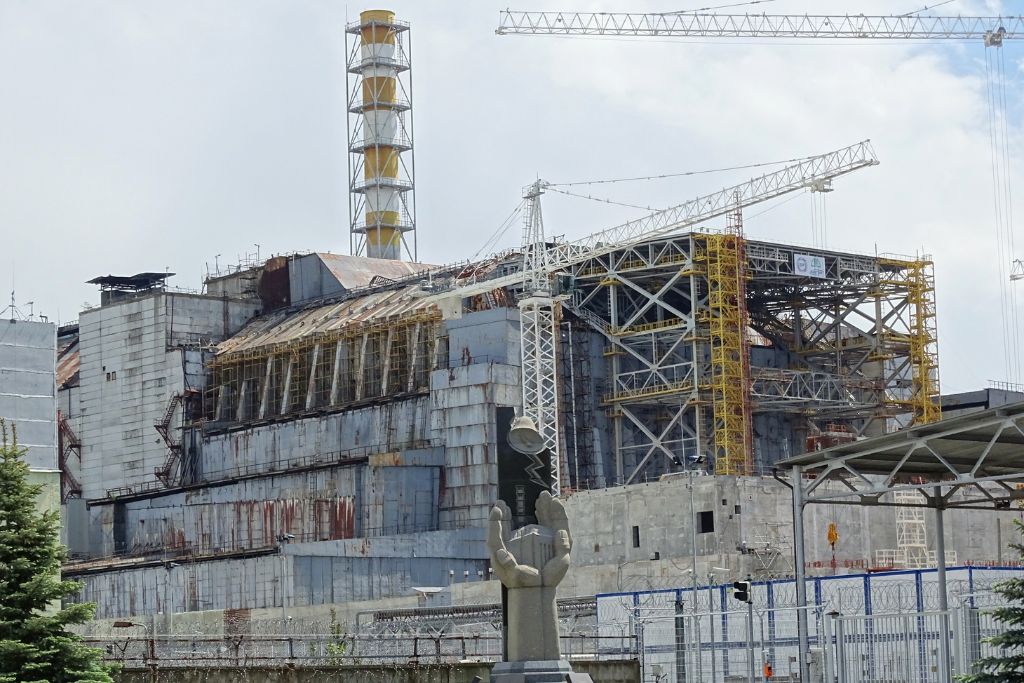The highly toxic byproducts of nuclear reactors can remain radioactive for tens of thousands of years.
—
A breakthrough technology that has the potential to dramatically reduce the amount of radioactive waste from nuclear power plants has received backing from Switzerland.
Developed by Geneva-based start-up Transmutex, the long-sought technology could solve a dilemma that has long been cited by the anti-nuclear movement as one of the main disadvantages of atomic energy. While this form of electricity is emission-free and thus a better alternative to highly polluting fossil fuels – making it the second-largest source of low emissions power after hydropower – the dangers posed by highly radioactive spent fuels raise concerns about its feasibility. This hazardous waste contains highly poisonous chemicals like plutonium and uranium pellets, which remain highly radioactive for hundreds of thousands of years, posing a threat to agricultural land, fishing waters, freshwater sources, and humans.
More on the topic: The Nuclear Waste Disposal Dilemma
After reviewing Transmutex’ proposal for several months, Swiss national body managing the disposal of radioactive waste Nagra concluded that the technology – known as nuclear transmutation – could cut waste by 80%. The process converts long-lived radioactive isotopes into shorter-lived or stable isotopes, reducing the overall radioactivity and longevity of the waste, thereby minimizing its environmental impact and long-term management requirements.
According to the start-up’s website, the technology could be used on 99% of the world’s nuclear waste and would cut the duration of its radioactivity from half a million years to “less than 500 years.”
Between 1954, when early commercial nuclear power stations started, and 2016, some 390,000 tonnes of spent fuel were accumulated. Of these, about two-thirds are currently being stored – mostly in inactive nuclear power plants – while the rest were reprocessed. The largest quantity of untreated nuclear waste on the planet is currently stored in the Sellafield plant in the UK.
In the case of Chernobyl, some of the plant’s reactors still contain an enormous amount of waste that will remain dangerous for tens of thousands of years. In 2019, one reactor was finally encased below an enormous steel and concrete structure. However, the US$1.6-billion construction will safely store the radioactive material for only about a century and is thus just a temporary solution.


“The successful management of radioactive waste and spent nuclear fuel underpins the peaceful use of nuclear technology in all its facets, from low-carbon energy production to medicine and industry,” said Mikhail Chudakov, IAEA Deputy Director General and Head of the Department of Nuclear Energy.
Uncertain Future
Nuclear power accounts for about 10% of electricity generation globally, rising to almost 20% in advanced economies, according to the International Atomic Energy Agency (IAEA).
The energy crisis sparked by the war in Ukraine and the race to net zero have pushed many countries, including Belgium, Canada, China, Finland, France, and Japan to take steps to extend operations at existing nuclear power plants and build new ones. As a result, new nuclear power capacity increased by about 40% between 2021 and 2022.
Nevertheless, nuclear power remains one of the most expensive and time-consuming forms of energy. Nuclear plants, while relatively cheap to run, cost billions of dollars to build and they take much longer than any other infrastructure for renewable energy, sometimes even more than a decade.
This story is funded by readers like you
Our non-profit newsroom provides climate coverage free of charge and advertising. Your one-off or monthly donations play a crucial role in supporting our operations, expanding our reach, and maintaining our editorial independence.
About EO | Mission Statement | Impact & Reach | Write for us
